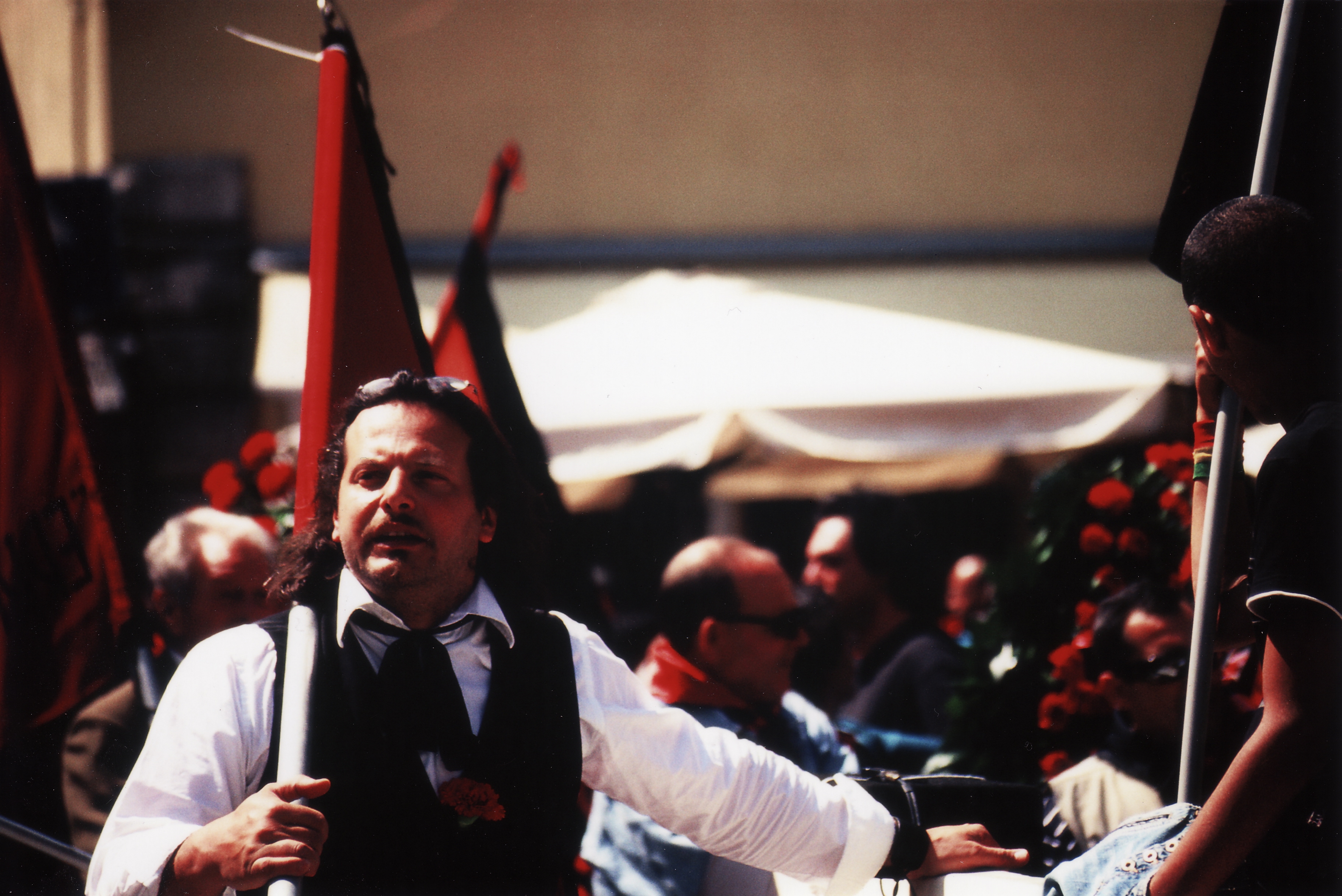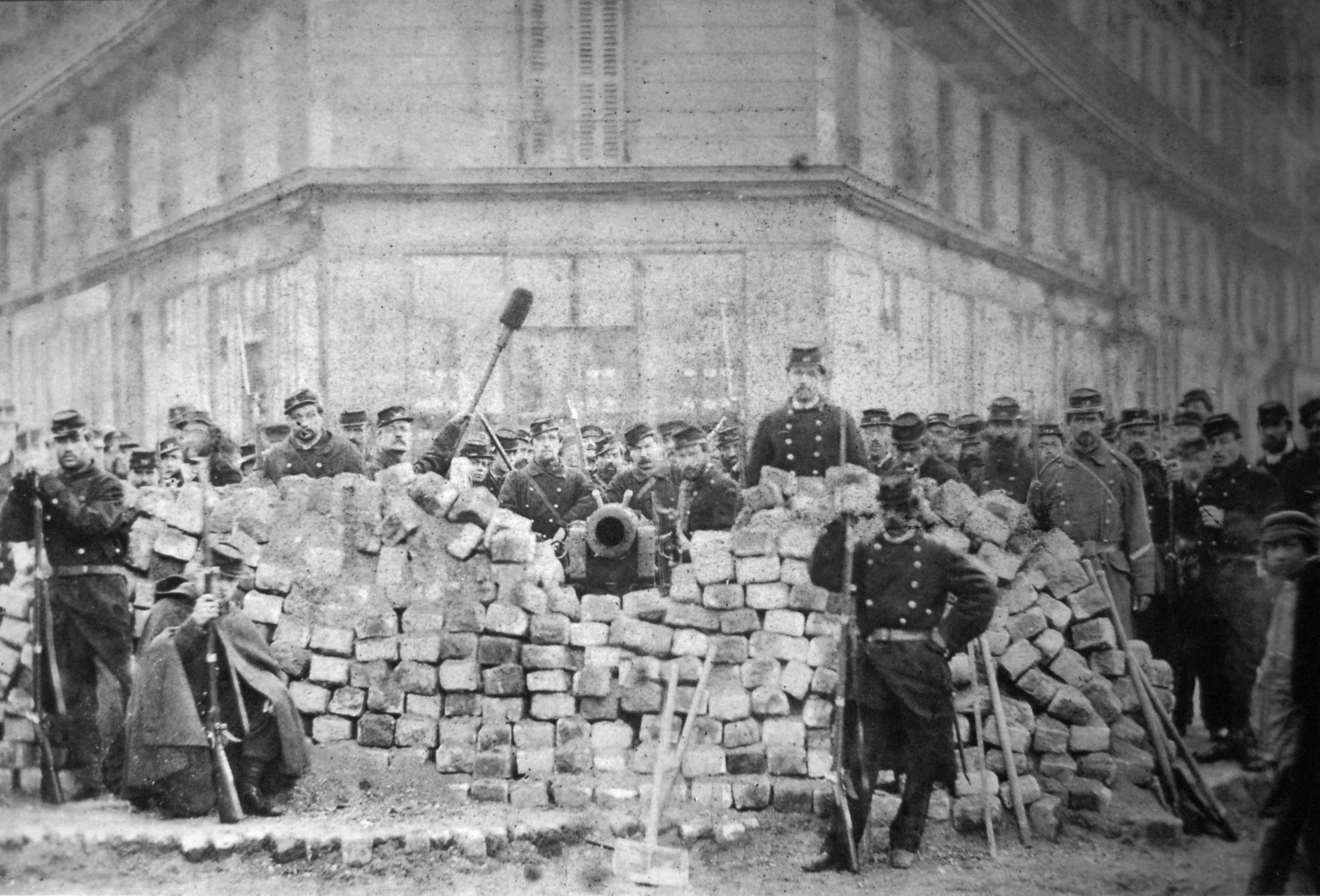|
Louise Pioger
Louise Pioger, also known as Louise Quitrime (or Quitrine), was born on , in Mezières-sous-Ballon, France, and died on in Garches. She was a woman laborer in the clothing and textile industry. She made waistcoats and was also an anarchist author and communard active with Women in the Paris Commune. She is known for her nursery rhymes book titled ''Rondes pour récréations enfantines'', which was for a long time wrongly attributed to Louise Michel. Biography Pioger was a dressmaker by profession. She made waistcoats. She married Alphonse Pierre Lefèvre, tailor, on January 7, 1868, in Ballon (Sarthe). They had two daughters. Widowed in 1884, Pioger married Louis Duprat, a tailor, and anarchist, who became a wine merchant and barkeeper in Paris on rue Joquelet and then later 11 rue Ramey in the 18th arrondissement in 1893. Pioger became the manager of this cabaret at 11 rue Ramey. One of her daughters married , and the other one Jules Lebailleur, both Parisian anarchists. ... [...More Info...] [...Related Items...] OR: [Wikipedia] [Google] [Baidu] |
Louise Michel
Louise Michel (; 29 May 1830 – 9 January 1905) was a teacher and important figure in the Paris Commune. Following her penal transportation to New Caledonia she embraced anarchism. When returning to France she emerged as an important French anarchist and went on speaking tours across Europe. The journalist Brian Doherty has called her the "French grande dame of anarchy." Her use of a black flag at a demonstration in Paris in March 1883 was also the earliest known of what would become known as the anarchy black flag. Early life Louise Michel was born on 29 May 1830 as the illegitimate daughter of a serving-maid, Marianne Michel, and the son of the house, Laurent Demahis. She was raised by her paternal grandparents, Charlotte and Charles-Étienne Demahis, in north-eastern France. She spent her childhood in the Château de Vroncourt and was provided with a liberal education. When her grandparents died, she completed teacher training and worked in villages. Career and activism ... [...More Info...] [...Related Items...] OR: [Wikipedia] [Google] [Baidu] |
French Anarchists
Anarchism in France can trace its roots to thinker Pierre-Joseph Proudhon, who grew up during the Bourbon Restoration in France, Restoration and was the first self-described anarchist. French anarchists fought in the Spanish Civil War as volunteers in the International Brigades. According to journalist Brian Doherty (journalist), Brian Doherty, "The number of people who subscribed to the anarchist movement's many publications was in the tens of thousands in France alone." History The origins of the modern anarchist movement lie in the events of the French Revolution, which the historian Thomas Carlyle characterized as the "open violent Rebellion, and Victory, of disimprisoned Anarchy against corrupt worn-out Authority". Immediately following the storming of the Bastille, the communes of France began to organize themselves into systems of local self-government, maintaining their independence from the State and organizing unity between communes through Federalism, federalist princ ... [...More Info...] [...Related Items...] OR: [Wikipedia] [Google] [Baidu] |
1848 Births
1848 is historically famous for the wave of revolutions, a series of widespread struggles for more liberal governments, which broke out from Brazil to Hungary; although most failed in their immediate aims, they significantly altered the political and philosophical landscape and had major ramifications throughout the rest of the century. Ereignisblatt aus den revolutionären Märztagen 18.-19. März 1848 mit einer Barrikadenszene aus der Breiten Strasse, Berlin 01.jpg, Cheering revolutionaries in Berlin, on March 19, 1848, with the new flag of Germany Lar9 philippo 001z.jpg, French Revolution of 1848: Republican riots forced King Louis-Philippe to abdicate Zeitgenössige Lithografie der Nationalversammlung in der Paulskirche.jpg, German National Assembly's meeting in St. Paul's Church Pákozdi csata.jpg, Battle of Pákozd in the Hungarian Revolution of 1848 Events January–March * January 3 – Joseph Jenkins Roberts is sworn in, as the first president of the inde ... [...More Info...] [...Related Items...] OR: [Wikipedia] [Google] [Baidu] |
Union Des Femmes Pour La Défense De Paris Et Les Soins Aux Blessés
''Union des femmes pour la défense de Paris et les soins aux blessés'' ( en, Women's Union to Defend Paris and Care for the Wounded) was a women's group during the 1871 Paris Commune. The union organized working women, ensured a market and fair pay for their work, and participated in the defence of Paris against the troops of the Third Republic, particularly at Place Blanche. History It was founded by Elisabeth Dmitrieff on 11 April 1871 in the Larched room (79 Temple Road) in the 10th arrondissement, Dmitrieff, who had been sent to Paris from London by Karl Marx as a representative of the First International, was a member of the central committee and remained general secretary of the Union's executive committee, the only non-elected and non-revocable post of the organization. The executive committee was made of seven members. About 130 served in the union's central committee. Actual membership is estimated as being a thousand or more. In April 1871, the group issued a cal ... [...More Info...] [...Related Items...] OR: [Wikipedia] [Google] [Baidu] |
Semaine Sanglante
The ''semaine sanglante'' ("") was a weeklong battle in Paris from 21 to 28 May 1871, during which the French Army recaptured the city from the Paris Commune. This was the final battle of the Paris Commune. Following the Treaty of Frankfurt and France's loss in the Franco-Prussian War, on March 18 the new French government under Prime Minister Adolphe Thiers attempted to remove a large number of cannon from a park in Montmartre, to keep them out of the hands of the more radical soldiers of the Paris National Guard. In the confrontation that followed, two French generals were seized and executed by the National Guard. Thiers, the army commander Patrice MacMahon and the French government hurriedly left the city, and established their headquarters in Versailles, and prepared plans to recapture the city. The Paris Commune made an unsuccessful attack on Versailles under the leadership of Louis Charles Delescluze. Between May 8 and May 20, French forces had retaken the territory su ... [...More Info...] [...Related Items...] OR: [Wikipedia] [Google] [Baidu] |
Carmagnole
"La Carmagnole" is the title of a French song created and made popular during the French Revolution, accompanied by a wild dance of the same name that may have also been brought into France by the Piedmontese. It was first sung in August 1792 and was successively added to during the revolutionary events of 1830, 1848, 1863–64, and 1882-83. The authors are not known. The title refers to the short jacket worn by working-class militant ''sans-culottes,'' adopted from the Piedmontese peasant costume named for the town of Carmagnola. It sarcastically sings of the triumphs over the Queen of France, Marie Antoinette (Madame Veto), King Louis XVI (Monsieur Veto), and the French monarchists in general. History There are varied accounts of the song and where it was sung. It was mainly a rallying cry or entertainment for revolutionaries. It was also used to insult opponents of the French Revolution. A popular punishment was to make anti-revolutionaries "sing and dance the Carmagnole", ... [...More Info...] [...Related Items...] OR: [Wikipedia] [Google] [Baidu] |
18th Arrondissement Of Paris
The 18th arrondissement of Paris (''XVIIIe arrondissement'') is one of the 20 arrondissements of the capital city of France. In spoken French, this arrondissement is referred to as ''dix-huitième''. The arrondissement, known as Butte-Montmartre, is located on the right bank of the River Seine. It is mostly known for hosting the district of Montmartre which contains a hill known for its artistic history, the Bateau-Lavoir where Pablo Picasso, Georges Braque, and Amedeo Modigliani lived and worked in early 20th century, the house of music diva Dalida, the Moulin Rouge cabaret, other historic features, and the prominent Sacré Cœur basilica which sits atop the hill. The 18th arrondissement also contains the North African and African district of Goutte d'Or which is famous for its market, the marché Barbès, where one can find various products from the African continent. Geography The land area of this arrondissement is exactly 6.005 km2 (2.319 sq. miles, or 1,484 acres). ... [...More Info...] [...Related Items...] OR: [Wikipedia] [Google] [Baidu] |
Nursery Rhyme
A nursery rhyme is a traditional poem or song for children in Britain and many other countries, but usage of the term dates only from the late 18th/early 19th century. The term Mother Goose rhymes is interchangeable with nursery rhymes. From the mid-16th century nursery rhymes begin to be recorded in English plays, and most popular rhymes date from the 17th and 18th centuries. The first English collections, ''Tommy Thumb's Song Book'' and a sequel, ''Tommy Thumb's Pretty Song Book'', were published by Mary Cooper (publisher), Mary Cooper in 1744. Publisher John Newbery's stepson, Thomas Carnan, was the first to use the term Mother Goose for nursery rhymes when he published a compilation of English rhymes, ''Mother Goose's Melody, or, Sonnets for the Cradle'' (London, 1780). History Lullabies The oldest children's songs of which we have records are Lullaby, lullabies, intended to help a child fall asleep. Lullabies can be found in every human culture. The English term lullaby i ... [...More Info...] [...Related Items...] OR: [Wikipedia] [Google] [Baidu] |
Women In The Paris Commune
The Paris Commune was an insurrectionary period in the history of Paris that lasted just over two months, from 18 March 1871 to the that ended on 28 May 1871. This Rebellion, insurrection refused to recognize the government of the National Assembly (1871), National Assembly of 1871, which had just been elected by universal male suffrage. Many women took active roles in the events, and are known as "communardes". They are important in the history of women's rights in France, particularly with regards to women's emancipation.. Equal pay and the first forms of structured organization of women in France appear during this period, in particular the Union des femmes pour la défense de Paris et les soins aux blessés or the Comité de vigilance de Montmartre. Context A precarious daily life Under the Second French Empire, salary inequalities were high: men earned twice as much as women, who were seen as competitors to men and employed at lower cost. In general, women worked from hom ... [...More Info...] [...Related Items...] OR: [Wikipedia] [Google] [Baidu] |
Communards
The Communards () were members and supporters of the short-lived 1871 Paris Commune formed in the wake of the French defeat in the Franco-Prussian War. After the suppression of the Commune by the French Army in May 1871, 43,000 Communards were taken prisoner, and 6,500 to 7,500 fled abroad. Milza, 2009a, pp. 431–432 The number of Communard soldiers killed in combat or executed afterwards during the week has long been disputed: Prosper-Olivier Lissagaray put the number at twenty thousand, but estimates by more recent historians put the probable number between ten and fifteen thousand men. 7,500 were jailed or deported under arrangements which continued until a general amnesty during the 1880s; this action by Adolphe Thiers forestalled the proto-communist movement in the French Third Republic (1871–1940). The Franco-Prussian War and the Paris Commune The working class of Paris were feeling ostracized after the decadence of the Second Empire and the Franco-Prussian Wa ... [...More Info...] [...Related Items...] OR: [Wikipedia] [Google] [Baidu] |






